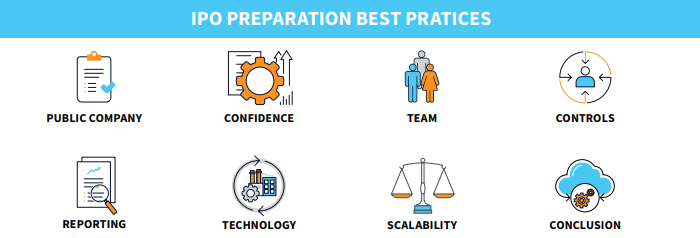Attention CFO: Top 4 Canadian Company IPO Planning Key Considerations
Initial Public Offering (IPO) Planning: Propel Your Canadian IPO Success By Implementing the Right Technology and Automation As you transition from...
4 min read
 Murray Quibell
Feb 3, 2025 10:06:54 PM
Murray Quibell
Feb 3, 2025 10:06:54 PM


Examining your business closely is important before starting a digital transformation or setting up an Enterprise Resource Planning (ERP) system like Acumatica. It's commonly called system and process evaluations, which means checking whether your current ERP software and other tools support your goals. Doing this upfront can smooth your operations and help your business grow.A system and process evaluation helps you see what’s working well and needs improvement. It’s all about making sure your tools and workflows are the right fit for your company. Doing this will set you up for a successful ERP implementation that meets your business needs.
System evaluations look at the tools and software your business uses. This includes checking how well they work, how they connect with each other, and if they help you reach your goals. Process evaluations focus on how your business operates day-to-day. This means reviewing workflows to see what’s efficient and what’s not.
These two evaluations go hand in hand. If your tools aren’t working well, your processes will suffer too. By examining both, you get a clear picture of what’s working, what’s not, and how to improve.
Implementing an Enterprise Resource Planning (ERP) system significantly enhances a company's efficiency and productivity. A critical component of this implementation is evaluating existing systems and processes. This evaluation is a foundation for successful ERP integration, ensuring the new system aligns with the company's operational needs and strategic goals.
Conducting a comprehensive evaluation of systems and processes is crucial for several reasons:
While evaluations are essential, they can present challenges, including:
To address these challenges:
Modern technology can facilitate system and process evaluations through:
Choosing the right ERP system can be overwhelming, but Acumatica’s ERP System Evaluation Checklist streamlines the process. This tool helps you:
This checklist cuts weeks off your research by reducing information overload, allowing you to make a confident and informed decision.
A comprehensive evaluation of systems and processes is a critical step in preparing for ERP implementation. It ensures alignment with business objectives, identifies areas for improvement, and lays the groundwork for a successful transition. By following a structured evaluation process and adhering to best practices, organizations can enhance their operational efficiency and achieve their strategic goals.
Aqurus Solutions understands that every business is unique. That’s why we offer customized Acumatica Cloud ERP solutions tailored to meet your specific goals and streamline your operations. Our expert team collaborates with you to create an implementation plan that drives efficiency and fits your needs.
Our partnership doesn’t end at implementation. We provide ongoing support and training to ensure you fully leverage your Acumatica software. Our team is ready to help whenever you need assistance, ensuring a smooth and successful experience.
At Aqurus, customer satisfaction is our priority. We simplify the ERP transition process, making it seamless and stress-free.
Contact us today for a no-obligation conversation about how Acumatica Cloud ERP can elevate your business. As a gold-certified Acumatica partner, Aqurus Solutions is here to guide you through a smooth transition and unlock your business’s full potential in the digital age.
Set your business up for ERP success by starting with a thorough evaluation. With the right tools, insights, and support, you can confidently implement Acumatica and achieve your strategic goals. Contact Aqurus Solutions today to get started!

Initial Public Offering (IPO) Planning: Propel Your Canadian IPO Success By Implementing the Right Technology and Automation As you transition from...

Our recent Acumatica 2023 R1 Key Themes webinar highlighted the benefits of the Acumatica Canadian Payroll and its key features. Streamline your...

In the dynamic world of Enterprise Resource Planning (ERP) solutions, two names often stand out: Acumatica and NetSuite. Both offer comprehensive...